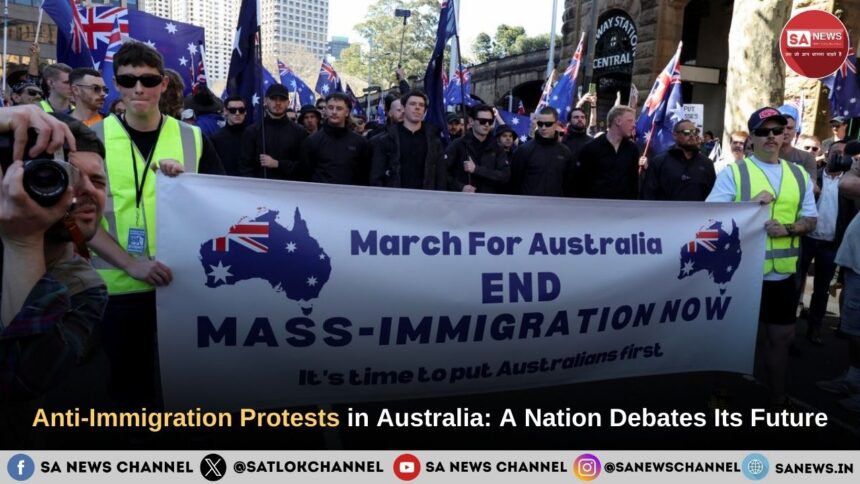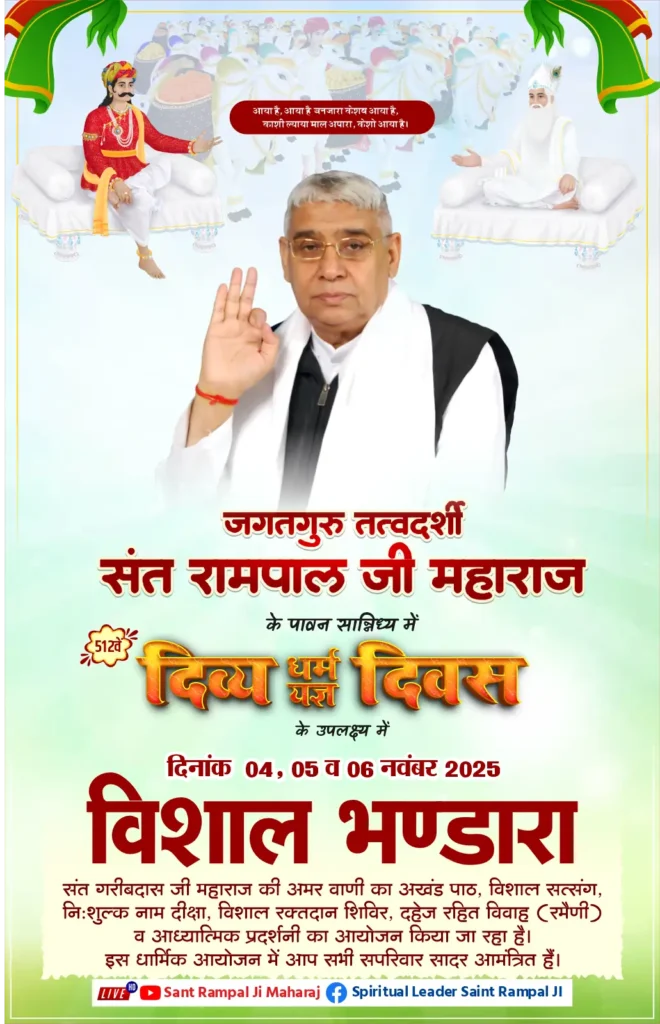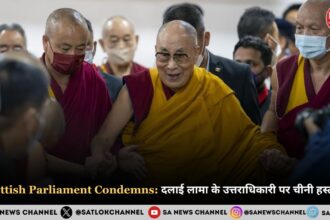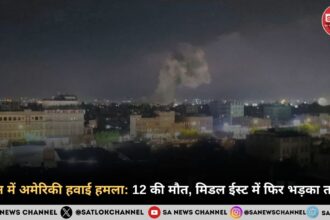Anti-Immigration Protests in Australia: Over the weekend, thousands of people across Australia joined anti-immigration protests in cities like Sydney, Melbourne, and Adelaide. These rallies were part of a movement called the March for Australia, where people said they were worried about how immigration affects the country.
Some people came to support the protests, while others showed up to disagree. The events were peaceful for the most part, but they caused a lot of debate about multiculturalism in Australia and what it means to be Australian.
What Happened in Each City
Sydney: A March Without Trouble
In Sydney, about 8,000 people gathered at Victoria Park and walked through the city. Police were there to keep everyone safe, and no major problems were reported.
Melbourne: Two Protests at Once
In Melbourne, the anti-immigration protest happened at the same time as a pro-Palestine rally. This caused some tension between the two groups, but most people stayed calm.
Adelaide: The Largest Crowd
Adelaide saw the largest attendance, with about 15,000 individuals participating in both the protest and the counter-protest.Even though emotions were high, the event stayed peaceful.
Who Joined the Protests—and Why It Matters
Some politicians joined the March for Australia, including Senator Pauline Hanson and MP Bob Katter. Their presence caused controversy because some speakers had ties to far-right extremism. One speaker in Melbourne was known for being part of a neo-Nazi group, which made many people uncomfortable.
Other groups also joined, like conspiracy theorists and former anti-lockdown protesters. One person even held a sign supporting someone accused of killing two police officers, which shocked many Australians.
What the Government Said
Australian leaders spoke out against the protests. Home Affairs Minister Tony Burke said these rallies were “not Australian” and warned that they could hurt the country’s unity. Dr Anne Aly, the Minister for Multicultural Affairs, said the protests were based on racism and didn’t belong in modern Australia.
Also Read: Midnight Chaos Erupts As Assailants Disrupt Peaceful Protest In Kolkata
The government made it clear that they support immigrant communities and believe in keeping Australia a welcoming and fair place for everyone.
What Protesters Say They’re Worried About
People who support the anti-immigration protests say they are worried about:
- Traffic and overcrowding
- Not enough housing
- Rising prices and lower wages
- Pressure on hospitals and schools
- Environmental problems
- Crime and safety
They believe that too much immigration is making these problems worse. But critics say these worries are being used to spread hate and fear, especially when far-right groups are involved.
Why This Matters for Australia
Australia is a country built by immigrants. People from all over the world have helped shape its culture, economy, and communities. But now, some Australians are feeling stressed about money, housing, and jobs. These are real problems, but mixing them with hate speech and extremist ideas can be dangerous.
The protests show that Australia is facing a big question: how can it solve these problems while staying fair and welcoming to all?
What Comes Next
As the Australia immigration debate continues, the country must decide how to move forward. Will leaders and communities work together to find smart solutions, or will angry voices take over the conversation?
Many hope that Australia will choose kindness, fairness, and smart policies instead of division and hate. The future of multiculturalism in Australia depends on it.
Societies often face tension when resources seem limited and communities feel divided. But history also proves that hate and division have never created lasting solutions. True stability comes from fairness, compassion, and a shared sense of humanity.
In the same way, Satgyan (true spiritual knowledge) teaches that peace in society begins with truth in individuals. Just as data guides policies, spiritual wisdom guides human behavior. If leaders and citizens follow moral and truthful paths, unity and justice become natural outcomes.
For deeper insights into Satgyan and how it can solve social problems, explore the official channel: Sant Rampal Ji Maharaj YouTube








